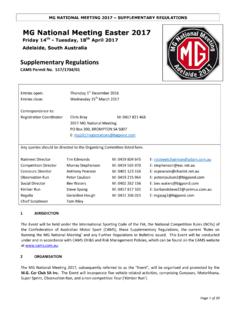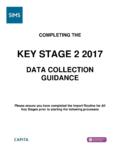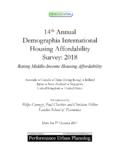Transcription of The State of Influencer Marketing 2017 - Linqia
1 2016 Linqia , Inc. All rights reserved. PHOTO BY: MANDY & SUCH FOR COTTONELLEA look into how brands and agencies view the future of Influencer marketingThe State of Influencer Marketing 2017 2016 Linqia , Inc. All rights reserved. !2 Influencer Marketing saw explosive growth in 2016, with 86% of marketers having used the tactic, 94% of whom found it State of Influencer Marketing 2017 was designed to understand how B2C marketers are using Influencer Marketing today and how they plan to incorporate it into their plans for 2017 . The findings include responses from 170 marketers across a variety of industries including CPG, Food & Beverage, Media, and Retail, as well as their agencies. According to the survey, 86% of marketers used the channel in 2016, with content being the top driver. Of the marketers who used Influencer Marketing in 2016, 89% of marketers did so to create authentic content about their brand, 77% used Influencer Marketing to drive engagement around their brand and 56% used the channel to drive traffic to their websites or landing pages.
2 0%25%50%75%100%Create authentic content about my brand Generate authentic, easily-discoverable product reviews Generate content cost-effectively Reach younger generations who don t trust traditional advertising Drive engagement around my product/brand Drive traffic to my website/landing page Grow my email database with qualified consumers Drive online and in-store product sales Other89%36%43%43%77%56%34%8%8%What are the top benefits of Influencer Marketing ? (Select all that apply)BUDGETS ARE INCREASING IN 2017 While it remains a highly popular Marketing tactic, most marketers say that determining the ROI of Influencer Marketing will be their top challenge in 2017 . In large part, this call for accountability is because budgets are increasing. In 2016, most marketers spent between $25,000 - $50,000 per Influencer Marketing program, which survey respondents report will double to $50,000 - $100,000 per program in 2017 .
3 Overall budgets are set to increase as well, with 48% of marketers planning to increase their Influencer Marketing budgets in 2017 and only 4% planning to decrease their investment in the channel. 2016 Linqia , Inc. All rights reserved. !30%25%50%75%100%Under $10K $10K - $25K $25K - $50K $50K - $100K $100K - $500K Over $500K20%33%20%14%12%1%On average, how much do you spend per Influencer Marketing program?0%25%50%75%100%Under $10K $10K - $25K $25K - $50K $50K - $100K $100K - $500K Over $500K21%7%13%37%18%4%How much do you plan to spend per Influencer Marketing program in 2017 ?0%25%50%75%100%Increase Decrease Stay the same Not sure/Don t know48%23%25%4%How is your Influencer Marketing budget going to change in 2017 ? 2016 Linqia , Inc. All rights reserved. !40%25%50%75%100%Determining where Influencer Marketing fits in my Marketing mix Choosing which Influencer Marketing provider to work with Determining the ROI of my Influencer Marketing programs Changes in FTC Regulations governing sponsored content The amount of time it takes to manage Influencer Marketing programs More social network algorithm changes will make content less visible Rapidly changing consumer behaviors make it hard for brands to stay relevant Other41%45%78%30%31%29%11%5%What do you see as the top challenges for Influencer Marketing in 2017 ?
4 (Select top three)Measuring the ROI of Influencer Marketing 0%25%50%75%100%Reach Engagement Audience Sentiment Traffic Conversions Product Sales Other61%81%24%62%53%34%3%How do you measure the success of your Influencer Marketing programs? (Select all that apply)Seventy-eight percent of marketers cite measuring the ROI of Influencer Marketing as their top challenge for 2017 , yet 61% of marketers are still measuring the success of their programs through audience reach, which is a metric that can be easily falsified through the purchase of fake followers. 1 To address this challenge, smart marketers have started to look at the full consumer journey and examine how consumers are moving through the entire path to purchase, instead of just looking at reach. Eighty-one percent of marketers cite engagement as their top metric for measuring Influencer Marketing success, followed by 62% who analyze the amount and quality of traffic driven to their Inc.
5 The Influencer You Use May Be Ripping You Off. September, 2016 2016 Linqia , Inc. All rights reserved. !5In line with this trend of increased accountability, performance-based pricing models are gaining traction, with 50% of marketers reporting that cost-per-click (CPC) and cost-per-engagement (CPE) pricing models are the most effective for driving results. Only 17% of marketers think that pay-per-post or flat rate pricing, which is the most widespread form of Influencer compensation, is effective. Influencer Marketing pricing models are defined as: > Pay per post or video - individual influencers are paid a flat rate for creating and publishing a piece of content, whether that be a tweet, a photo, a video or a blog post. > Free product or experiences - brands offer product or travel compensation in lieu of monetary payment, which can range from an all expenses paid trip to being among the first consumers to use a new product.
6 > Cost per engagement (CPE) - influencers are compensated based on the number of engagements their content draws (likes, shares, retweets). > Cost per click (CPC) - brands pay for consumers who have taken an action after being inspired by Influencer content (typically clicking through to visit a brand s landing page). > Cost per acquisition (CPA) - influencers are compensated based on the number of sales or subscription sign-ups they per post/video Free product or experiences CPE (Cost per Engagement) CPC (Cost per Click) CPA (Cost per Acquisition) Other57%38%43%40%15%6%Which Influencer Marketing models have you tried? (Select all that apply)0%25%50%75%100%Pay per post/video Free product or experiences CPE (Cost per Engagement) CPC (Cost per Click) CPA (Cost per Acquisition) Other17%16%25%25%7%10%Which Influencer Marketing pricing model have you found to be the most effective?
7 Influencer Marketing PRICING MODELS 2016 Linqia , Inc. All rights reserved. !6A SHIFT IN OWNERSHIPAs Influencer Marketing continues to mature and evolve, marketers are evaluating where the channel should sit as a line item in their budgets. The survey found that 42% of marketers now account for Influencer Marketing as part of their advertising/ Marketing budgets, whereas only 31% account for Influencer Marketing as a PR/communications line item. This signals that the industry is evolving from an organic channel owned by communications to a paid channel owned by Marketing Content Marketing Advertising/Media PR/Communications Product Development Shopper Marketing Other32%38%42%31%16%2%2%Where does Influencer Marketing sit within your budget? (Select all that apply)The surge in Influencer Marketing has also spawned a variety of platforms and providers that aim to help brands navigate this emerging sector.
8 As a result, identifying which Influencer Marketing partner to work with is ranked as the second biggest challenge of 2017 . Today, 64% of marketers use managed or "turn-key" services when executing their Influencer Marketing programs while 25% still use a manual process involving email and spreadsheets for Influencer outreach and management. Only 11% of respondents use a self-service SaaS platform to automate Influencer outreach, management, and reporting. WORKING WITH Influencer Marketing PARTNERS0%25%50%75%100%In-house SaaS platform Managed or turn-key service provider25%11%64%Do you manage programs in house or through an Influencer Marketing platform/vendor?Managing Influencer Marketing 2016 Linqia , Inc. All rights reserved. !7 Because the process of managing Influencer Marketing programs can be so time consuming when handled in-house, 52% of marketers who do so only work with an average of 10-25 influencers per program.
9 50% of in-house program managers estimate spending more than 25 hours managing each program while 25% spend more than 50 hours managing each WITH INFLUENCERSHow many hours do you spend managing an entire Influencer Marketing program?0%25%50%75%100%Less than 10 10 - 25 25 - 50 50 - 75 75 - 100 More than 10042%25%17%8%8%0%0%25%50%75%100%1 - 10 10 - 25 25 - 50 50 - 75 75 - 100 More than 100 I m not sure52%29%11%0%4%2%2%How many influencers do you work with on average per program? 2016 Linqia , Inc. All rights reserved. !80%25%50%75%100%Facebook Twitter Instagram Snapchat Pinterest Blogs Google+ Other87%44%87%28%40%48%4%6%Which social media platforms are most important to your Influencer Marketing strategy? (Select all that apply)In April 2016, the Pew Research Center announced that Millennials have surpassed Baby Boomers as the largest living generation in the There are now million people who were between 18 and 34 last year, compared to the previously largest generation, Baby Boomers, who numbered million.
10 In keeping with this finding, marketers overwhelmingly cite Facebook and Instagram as the most important social platforms for their Influencer Marketing programs. Influencer blogs are the next most important channel, with nearly half of respondents leveraging them as a tool for improving discovery and SEO. PREFERRED SOCIAL CHANNELSB logs are an especially interesting component in that they offer the ability to tell a story. Marketers use this tactic to establish an emotional connection between their brand and the consumer, rather than a fleeting impression delivered through a display ad or social post. Social channels are especially effective when they are used to reach new audiences and drive traffic to long-form content, such as a blog post or video, that has been proven to convert. 2016 Linqia , Inc. All rights reserved.







